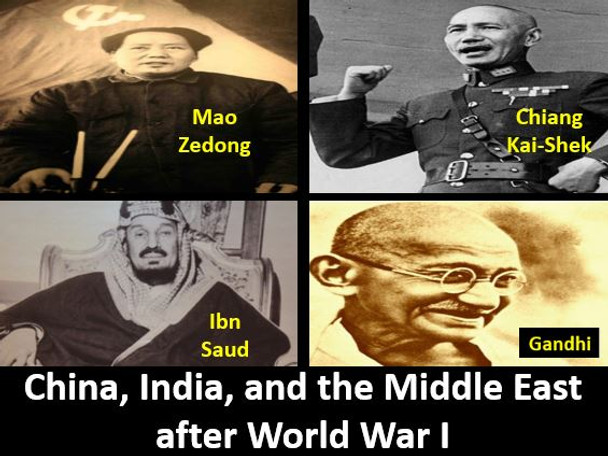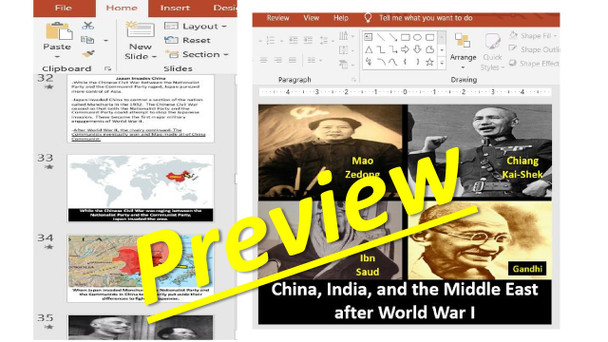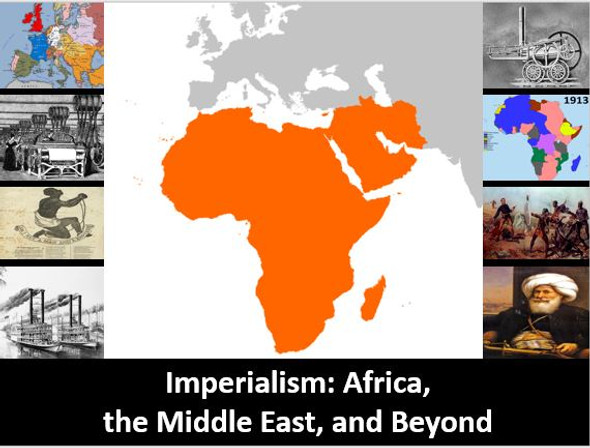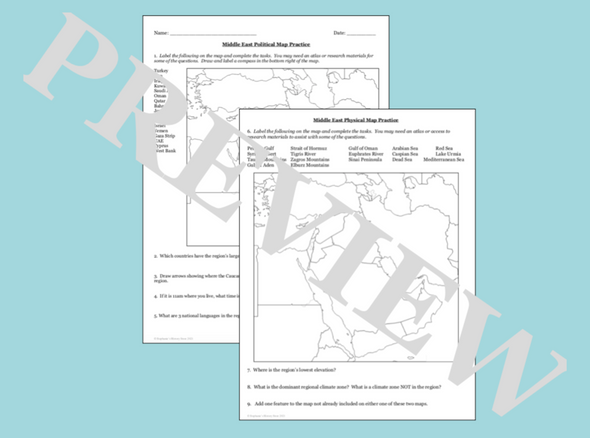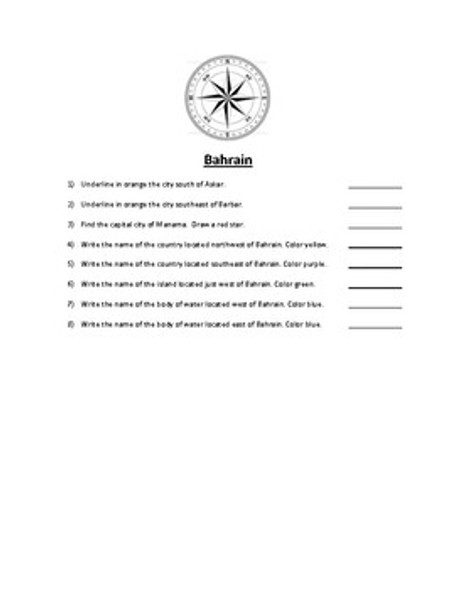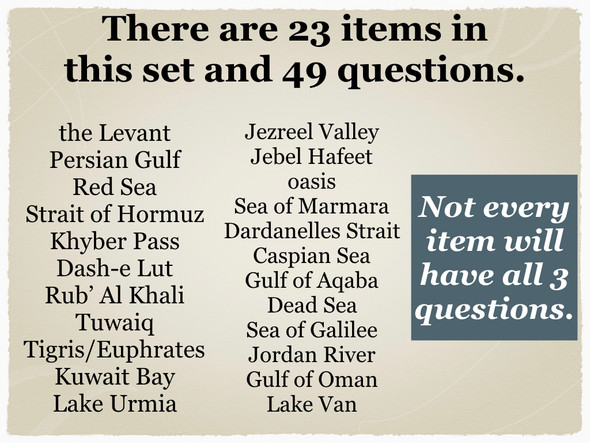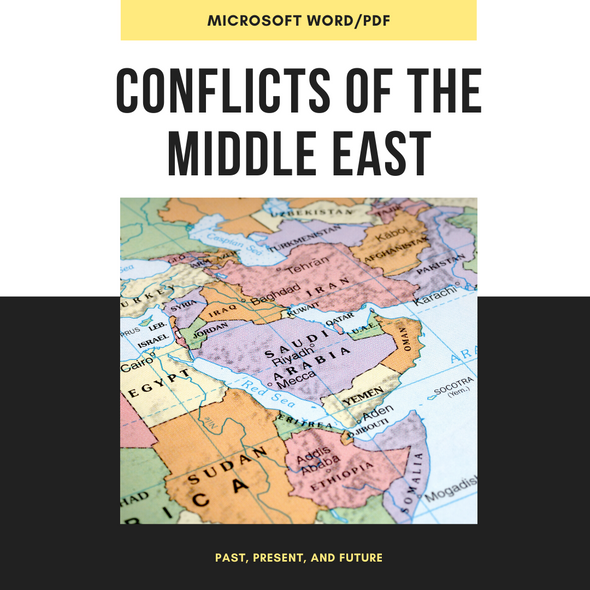China, India, and the Middle East After WW I
- Bulk Pricing:
- Buy in bulk and save
- Contributor:
- Teach World History
- Grade Level:
- 7-12 and homeschool
- Product Type:
- PPT with guided student notes and activities
- File Type:
- PPT, PDF, DOC
- Pages:
- 39
- Answer Key:
- Yes
Description
This product includes a Power Point and Printable Student Notes. Also, if you don’t want to teach this material through a presentation, there is a reading guide worksheet to do instead. There is also an extra vocabulary worksheet. The items come in Microsoft and PDF formats. The content covered is as follows:
China, India, and the Middle East After WW I:
Mohandas Gandhi (1869-1948), Satyagraha (truth force), Mahatma, the Salt March, Untouchables, Pakistan, India, Nathuram Godse (1910-1949), Xinhai Revolution of 1911, Sun Yat-sen (1866-1925), the Qing Dynasty, the Republic of China, Emperor Puyi (1906-1967), Britain, France, the USA, Yuan Shikai (1859-1916), Germany, Austria-Hungary, the Ottoman Empire, World War I, the Treaty of Versailles, capitalism, communism, the Communist Party, Vladimir Lenin (1870-1924), Mao Zedong (1893-1976), Chiang Kai-shek (1911-1975), the Nationalist Party, the Long March, India, Muslims, Muhammad, the Koran, the Vedas, Monotheistic, Hindus, reincarnation, the Indian National Congress, the Muslim League, the Anarchical and Revolutionary Crimes Act of 1919, Colonel Reginald Dyer (1864-1927), the Amritsar Massacre in 1919, the Ottoman Empire, Mustafa Kemal (1881-1938), Reza Shah Pahlavi (1878-1944), Ahmad Shah Qajar (1898-1930), the Qajar dynasty, westernization, Iran, Shiite Muslims, Sunni Muslims, Saudi Arabia, Mustafa, Oil, Ibn Saud (1875-1952), Iraq, Kuwait, and MORE!!!
Created by Teach World History

